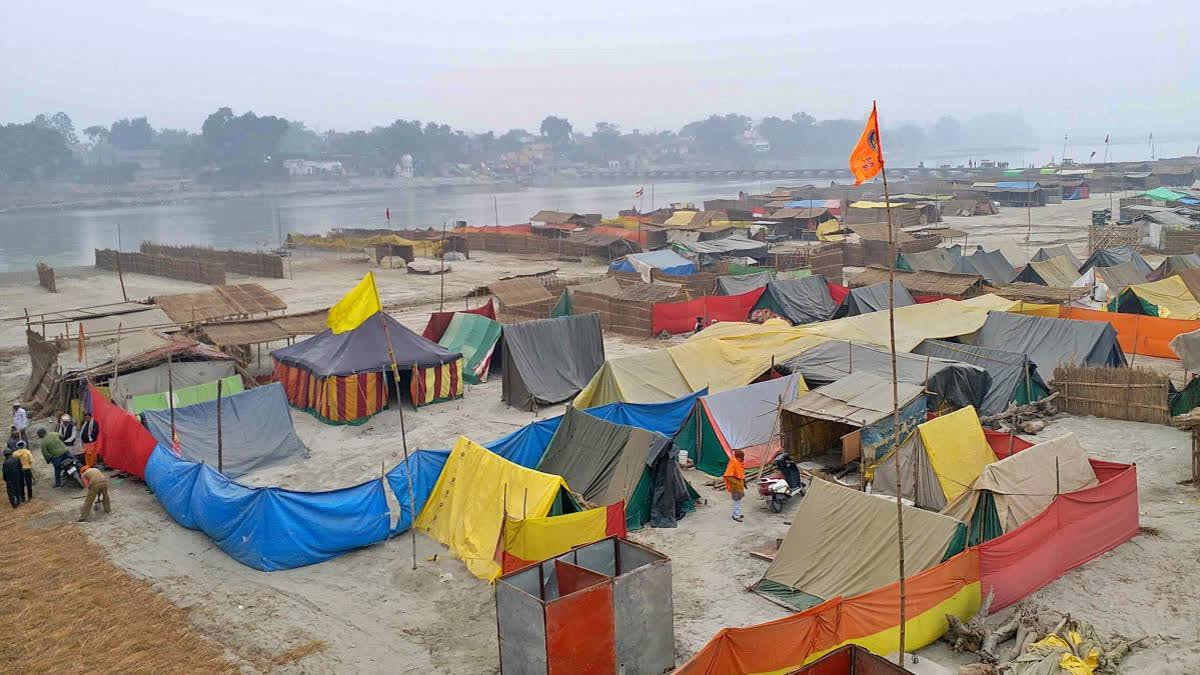Farrukhabad: The historic Ramnagariya Fair in Farrukhabad is set to commence on January 13, coinciding with the Maha Kumbh in Prayagraj. The fair, which spans approximately seven kilometres, is expected to attract lakhs of devotees. It holds significant mythological and spiritual importance, especially for those undertaking the arduous Kalpvas ritual.
Kalpvas: A Month-Long Penance
Kalpvas, the central religious activity during the fair, is a rigorous month-long penance that attracts around 50,000 devotees each year. According to local beliefs, performing Kalpvas brings salvation and transfers spiritual energy to participants. Devotees, known as Kalpvasis, must follow strict rules, including living in temporary tents called Rautis, bathing in the Ganga twice a day, and observing celibacy. These devotees believe that the fruits of 100 years of penance can be achieved by performing Kalpvas for a single month.
Mini Maha Kumbh: Spiritual Journey and Rules
The fair, often called 'Mini Maha Kumbh', is significant because it starts on Paush Purnima and lasts until Maghi Purnima (February 15). During this period, Kalpvasis take a dip in the sacred Ganga at Panchal Ghat in Farrukhabad, where they follow a strict daily routine.
Kalpvasis are required to wake up at Brahma Muhurta (pre-dawn) and bathe in the Ganga, followed by worship and participation in spiritual discourses and religious programs. They eat only once a day, cook their food on a stove, and sleep on the ground, remaining separated from their families.
Despite the harsh weather, with cold winds and occasional rain, Kalpvasis endure all hardships for the blessings of Mother Ganga. Many devotees share their experiences, describing the ritual as a deeply transformative spiritual journey. Talking to ETV Bharat, Kalpvasis like Rajrani, Gayatri Devi, and Sheela, who have been participating for years, spoke of the emotional and physical challenges faced during the month-long penance. "Despite the severe cold and rainy weather, we remain steadfast. We endure it all for the blessings of Maa Ganga," Rajrani said.
Rauti: The Temporary Abode of Kalpvasis
Thousands of Kalpvasis live in Rautis constructed on the sandy banks of the Ganga. These temporary shelters, made from tarpaulin and foil, provide basic living arrangements. Inside the Rauti, about five to six people live together, storing their belongings and sleeping on the floor.
The ground is covered with paddy and straw, and the area is enclosed with curtains on three sides. With the expected increase in the number of Kalpvasis, the fair area is likely to witness the construction of up to one lakh Rautis.
Major Bathing Dates: Religious Significance
The fair is marked by six major bathing dates, each holding unique religious significance. These include Makar Sankranti, Paush Purnima, Mauni Amavasya, Basant Panchmi, Maghi Purnima, and Mahashivratri. On these dates, thousands of devotees gather at the fair to take a dip in the Ganga, while Kalpvasis continue their ritual of bathing twice daily.
History of Ramnagariya Fair
The Ramnagariya fair has a rich history dating back to the 1950s. Initially, only saints and sages participated in the fair, which was held near Dhai Ghat on the banks of the Ganga. In 1955, former MLA Maharam Singh took an active interest in the fair, leading to the organisation of various conferences and a gradual increase in its size. By 1956, devotees from neighbouring areas began constructing huts along the Ganga's banks and participating in Kalpvas.
The fair's name was officially changed to 'Ramnagariya'; in 1956 after a proposal by Swami Shraddhanand. Since then, the fair has grown significantly. The construction of Lohia Setu in 1970 facilitated the arrival of more devotees, and by 1985, the fair had become a major spiritual event. The fair is now recognised not only in Uttar Pradesh but also in neighbouring states, attracting a large number of pilgrims every year.
Government Support and Arrangements
The district administration plays a key role in organising the fair, with infrastructure and facilities being set up in advance. Additional District Magistrate (ADM) Subhash Chandra Prajapati said, "The administration is making arrangements for tent cities and pandals for those coming from outside the fair area. Whether these facilities will be free is yet to be decided."
Additionally, many devotees create their own makeshift Rauti within the fair. The administration has been working diligently to ensure proper facilities are in place to accommodate the vast number of visitors expected.
Read More



